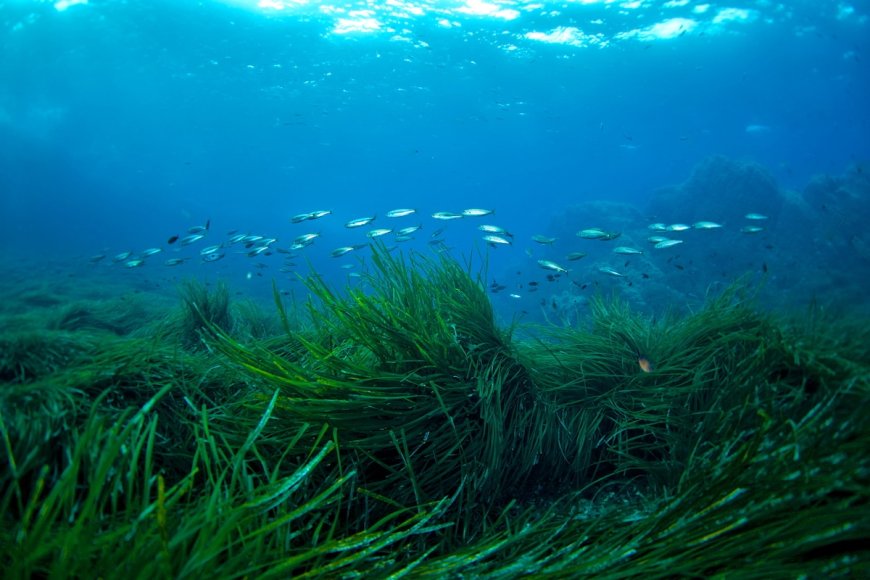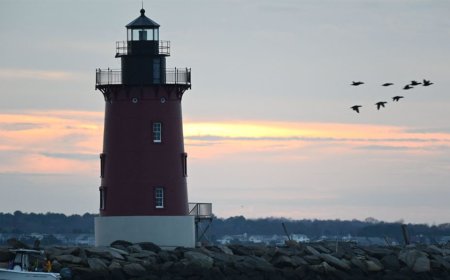Protecting the World’s Seagrass Meadows Could Prevent Billions in Damages, New Research Suggests
The world’s seagrass meadows capture and store enormous amounts of carbon, but they must be protected if the incredible work they do for our climate is to continue. A new global study predicts that protecting seagrass meadows that are “at-risk” could avert climate damages of more than $200 billion by stopping the release of over […] The post Protecting the World’s Seagrass Meadows Could Prevent Billions in Damages, New Research Suggests appeared first on EcoWatch.

The world’s seagrass meadows capture and store enormous amounts of carbon, but they must be protected if the incredible work they do for our climate is to continue.
A new global study predicts that protecting seagrass meadows that are “at-risk” could avert climate damages of more than $200 billion by stopping the release of over one billion tons of carbon, a press release from Florida International University (FIU) said.
“Seagrass meadows are not just important for marine biodiversity, they are a critical piece of the climate puzzle,” said lead author of the study Johannes Krause, an assistant research professor with FIU’s Institute of Environment, in the press release. “This research underscores their vast potential as carbon sinks and the importance of accurate data to ensure we’re protecting them properly.”
Led by scientists from FIU in partnership with Conservation International’s Blue Carbon Institute, the study drew upon samples from all over the world.
Vegetated coastal ecosystems cover just two percent of the seabed, but store almost 50 percent of the organic carbon that gets buried in ocean sediments.
In the most comprehensive examination of vegetated coastal ecosystems ever conducted, the researchers drew from 3,240 samples of seagrass and soil from 61 countries.
“Seagrass ecosystems are the unsung heroes of climate change mitigation,” said co-author of the study Emily Pidgeon, vice president for ocean science at Conservation International. “Found on every continent except Antarctica, these crucial ecosystems are the critical foundation for coastal communities, yet significantly understudied and undervalued.”
The research team found that seagrass meadows in Temperate Southern Africa and the Tropical Atlantic — including those along the Florida coast — held the highest carbon stocks, far exceeding the global median. Just one hectare — 2.47 acres — of seagrass in these places can sequester the carbon equivalent of the annual emissions of 10 to 22 cars.
Small delta regions on the coasts of Spain, Italy, France, Greece, South Africa, Malaysia and Colombia also demonstrated above-average levels of carbon storage, suggesting they could offer ideal conditions for the sequestration of carbon in seagrasses.
James Fourqurean, co-author of the study and a distinguished professor of biological sciences at FIU, has conducted decades of blue carbon research. The new study built upon this store of knowledge, which describes carbon sequestered by the planet’s coastal ecosystems and oceans.
Fourqurean said the latest research provides a clearer and more comprehensive understanding of the amount of carbon that is being stored along coastlines all over the world.
“Knowing the importance of seagrasses does not change the fact that we are still losing these valuable resources at a faster rate than the Amazon rainforests,” Fourqurean said. “We’ve answered one important question in terms of how much carbon is in these ecosystems, but we still have work to do in terms of protecting them and making sure the carbon stays there.”
The researchers said carbon storage by seagrasses varies by species. Some store more than others, particularly those with strong roots. It is therefore important to study which species of seagrass are present when estimating a given meadow’s carbon storage.
The study emphasized that conserving seagrass meadows is one of the most cost-effective methods to mitigate climate change. The integration of seagrass protections into nations’ Paris Agreement commitments, as well as including seagrasses as a blue carbon source in expanded carbon credit methodologies, are among crucial actions that must be taken immediately.
“If we don’t act now, we risk losing these ecosystems and the carbon stores they built up over centuries, compounding the effects of climate damage,” Krause explained. “It’s time to prioritize seagrass conservation and research globally.”
The study, “Global seagrass carbon stock variability and emissions from seagrass loss,” was published in the journal Nature Communications.
The post Protecting the World’s Seagrass Meadows Could Prevent Billions in Damages, New Research Suggests appeared first on EcoWatch.





















































